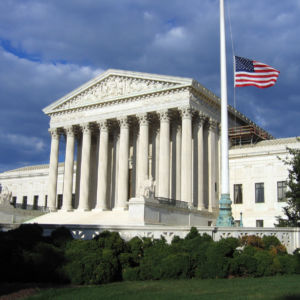Editor’s Note: For another viewpoint, see Point: Supreme Court’s Decision Is the Opposite of Religious Freedom
In a year beset by disappointing decisions from the Supreme Court, a trio of religious liberty cases decided this term provides constitutionalists with some hope.
Little Sisters of the Poor v. Pennsylvania
The Little Sisters of the Poor need no introduction. This order of female Catholic religious has been serving the elderly in 30 countries for over 175 years. Although the Little Sisters seem like an unlikely target, the order has been in the cross-hairs of one government or another for nearly a decade.
This week, in a 7-2 decision written by Justice Clarence Thomas, the Supreme Court held that the federal government had the authority to exempt the Little Sisters from its “birth control mandate.”
Sadly, the legal battle may not be at an end for the Little Sisters. The case likely will go forward on other grounds, but the court strongly implied that the Religious Freedom and Restoration Act (“RFRA”) would operate to protect the conscience rights of the Little Sisters.
That statute, the court explained, “provide[s] very broad protection for religious liberty.” It forbids the government from substantially burdening a person’s exercise of religion unless the government can demonstrate that there is no less restrictive means by which it can further a compelling government interest.
The contraceptive mandate clearly fails RFRA’s test. Certainly, there are other ways the government can provide contraceptives without forcing nuns to do so.
Espinoza v. Montana
In Espinoza v. Montana, the Supreme Court reaffirmed the fundamental right of families to send their children to the school of their choice, including religious schools. By a vote of 5 to 4, the court held that a state program to help families cover the cost of private school may not discriminate against schools with religious missions.
At issue in the case was a modest Montana program that granted tax credits for donations to organizations that awarded private-school tuition scholarships. The Montana Supreme Court held that the state’s “Blaine Amendment” forbade Montana from providing the tax credits to parents who chose a religious school.
The Supreme Court reversed the decision. The court held that Montana’s Blaine Amendment discriminated against religious schools and the families whose children attend them. In an opinion written by Chief Justice Roberts, the court held that the Free Exercise Clause “protects religious observers against unequal treatment.”
Montana had discriminated on the basis of a school’s religious status, plain and simple. The court’s decision strongly suggests that the Blaine Amendments remaining in 35 states are constitutionally infirm, and may not be used to discriminate against religious schools.
Our Lady of Guadalupe v. Morrissey-Berru
In Our Lady of Guadalupe, the court held that the First Amendment bars courts from intervening in employment disputes involving teachers at religious schools. Writing for the Court Justice Alito stated that the First Amendment protects church autonomy — including the right of religious institutions to decide matters “of faith and doctrine” without government intrusion.
This protection, Justice Alito noted, was crucial to the Framers of our Constitution — the British Crown, for example, had the right to fill “religious offices” and to otherwise control religion. As applied to schools, the court recognized that teachers who are entrusted with inculcating religious values and beliefs are “ministers of the faith,” even though they are not formally ordained.
As such, the government may not interfere with a religious school’s decision to hire or fire such an employee.
As Alito recognized, parents choose to send their children to religious schools for “religious education and formation.” Thus, a narrow interpretation of the ministerial exception would have interfered with the ability of parents to raise their children with a distinctly religious education.
In short, teachers at religious schools play a critical role in transmitting the faith to the next generation and are properly categorized as “ministers.”
Conclusion
Justice Thomas has famously lamented that the Free Exercise Clause seems to rest precariously on the lowest rung of the Court’s ladder of rights. With its trifecta of religious liberty decisions this term, the Supreme Court may finally be poised to give equal weight to religious liberty.
It’s about time.

